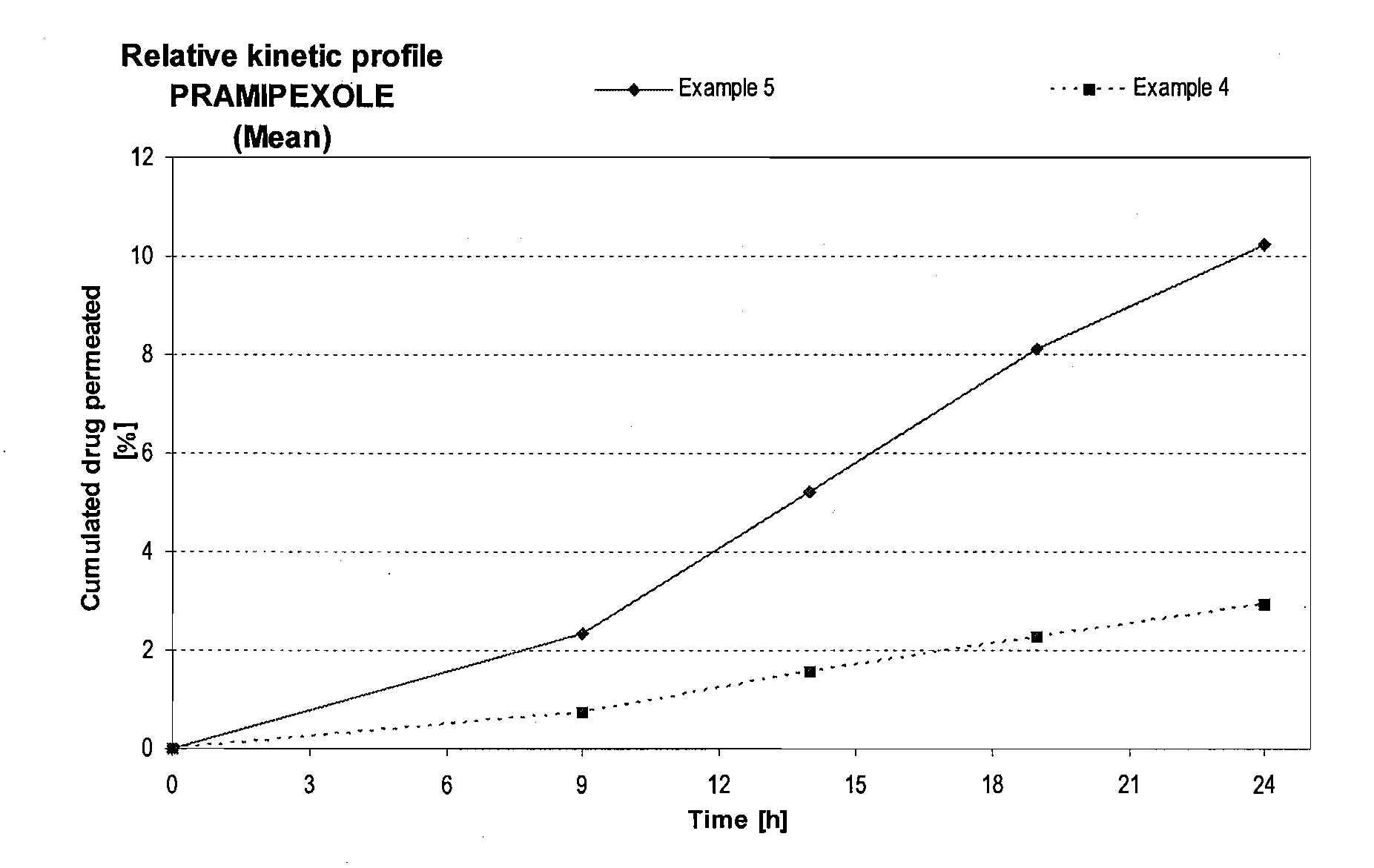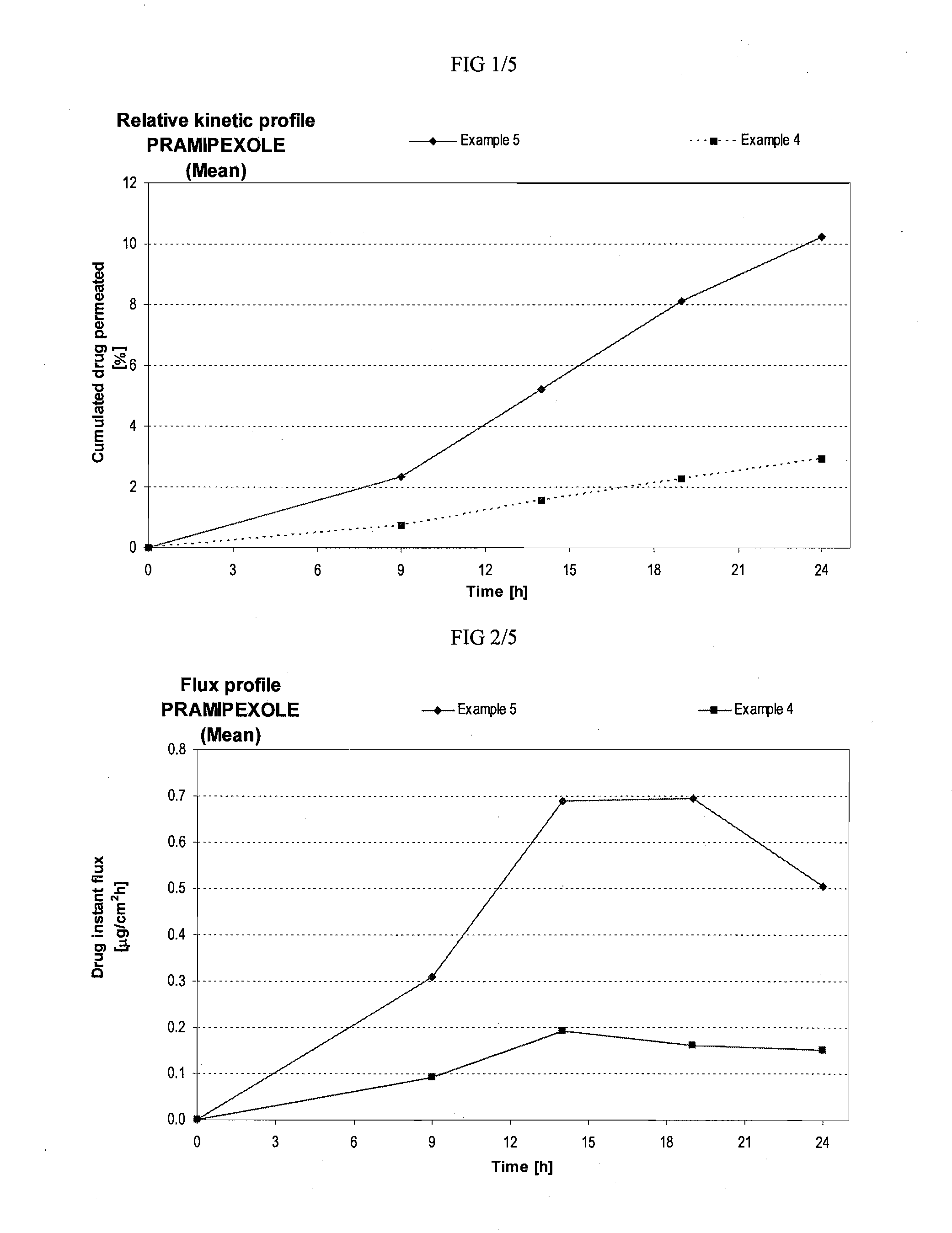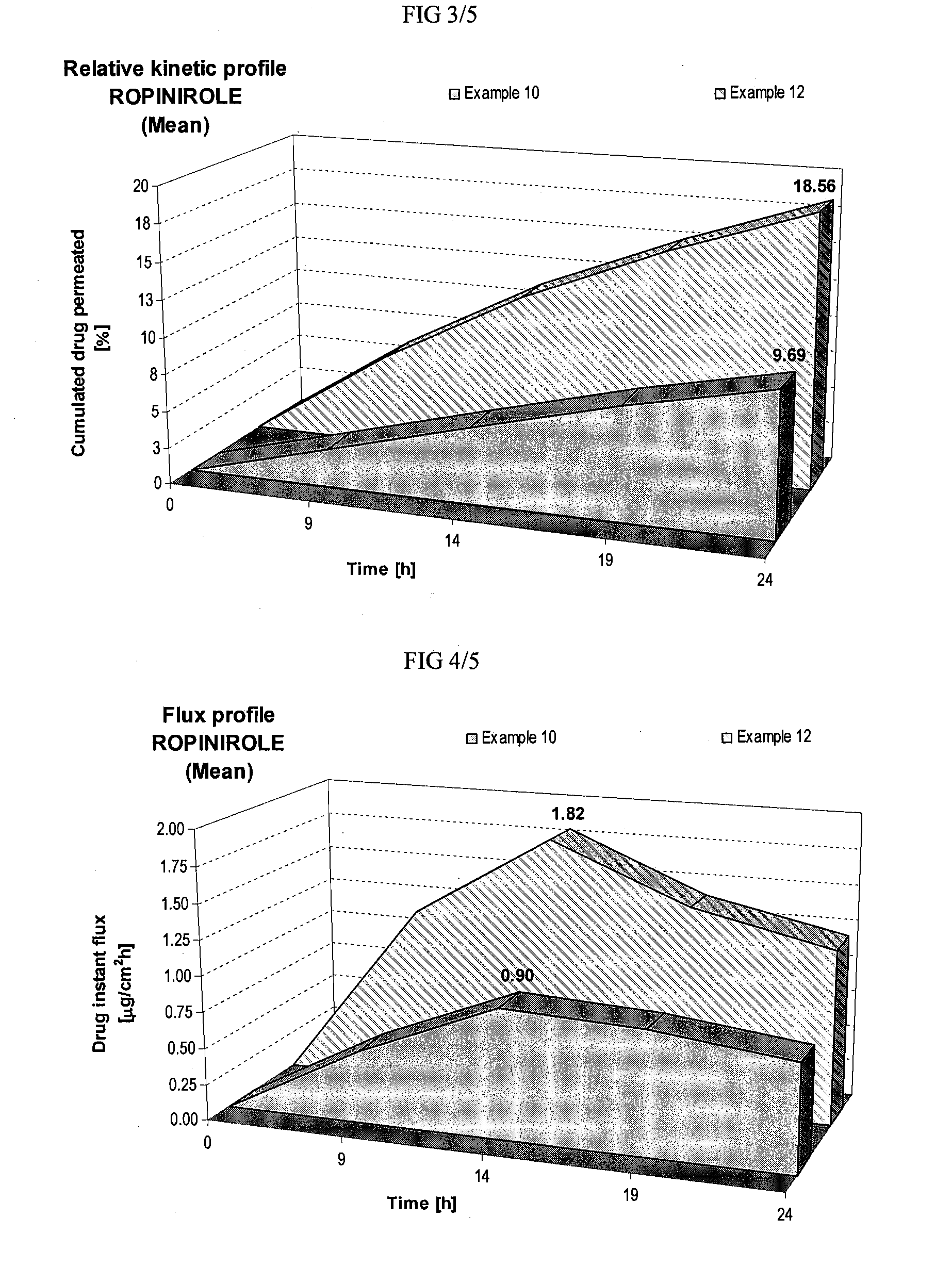Skin-friendly drug complexes for transdermal administration
a transdermal administration and drug complex technology, applied in the field of skin-friendly drug complexes for transdermal administration, can solve the problems of low encapsulation yield, difficult formulation of pharmaceutical preparations based on water stability, and low yield of cyclodextrins, so as to enhance the skin penetration of at least one amine drug, the effect of enhancing the skin penetration
- Summary
- Abstract
- Description
- Claims
- Application Information
AI Technical Summary
Benefits of technology
Problems solved by technology
Method used
Image
Examples
example 1a
[0111]Preparation of a carbomer gel of pramipexole according to the manufacturing process described in U.S. Pat. No. 5,225,189 was attempted.
Part IPurified waterq.s. 10.0gCarbopol ® ETD20200.045gPart IIPramipexole dihydrochloride monohydrate0.287gPropylene glycol2.000gEthanol1.900gDiisopropylamine0.045gPart IIIEthanol2.700g
[0112]In each part, the component parts are prepared separately. Part III is then mixed with Part I. When a uniform mixture is obtained, Part II is then added under stirring. This leads to precipitation of white particles (“salting out”). Furthermore, the gel presents a typical ammonia smell. Noteworthy, diisopropylamine already exceeds at this concentration the maximum amount (0.20% w / w) referenced in FDA Inactive Ingredient Guide for topical / transdermal route.
example 1b
[0113]Example 1a was repeated increasing the amount of diisopropylamine up to 0.150 g (1.5% w / w), i.e. the upper limit of the range of concentration recommended in U.S. Pat. No. 5,225,189. This leads also to precipitation of white particles (“salting out”). The fishy ammonia smell is now very strong and totally unacceptable.
example 1c
[0114]Example 1a was repeated further increasing the amount of diisopropylamine up to 0.450 g (4.5% w / w). A very flowable semi-solid formulation (about 2,000 cP, BROOKFIELD RV-DVII+featured with a small sample adapter, spindle S29, 20 rpm, 25° C.). Though, “gel” is still opalescent, and the very high amount of diisopropylamine employed in this example makes this “gel” totally unacceptable from an aesthetic aspect (strong smell, high risk for skin irritation).
PUM
| Property | Measurement | Unit |
|---|---|---|
| pH | aaaaa | aaaaa |
| skin temperature | aaaaa | aaaaa |
| vapor pressure | aaaaa | aaaaa |
Abstract
Description
Claims
Application Information
 Login to View More
Login to View More - R&D
- Intellectual Property
- Life Sciences
- Materials
- Tech Scout
- Unparalleled Data Quality
- Higher Quality Content
- 60% Fewer Hallucinations
Browse by: Latest US Patents, China's latest patents, Technical Efficacy Thesaurus, Application Domain, Technology Topic, Popular Technical Reports.
© 2025 PatSnap. All rights reserved.Legal|Privacy policy|Modern Slavery Act Transparency Statement|Sitemap|About US| Contact US: help@patsnap.com



